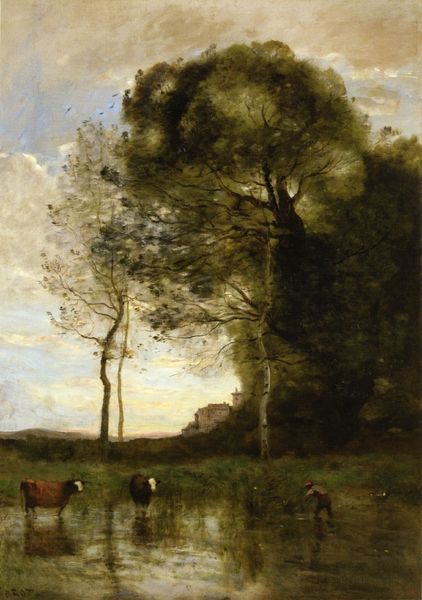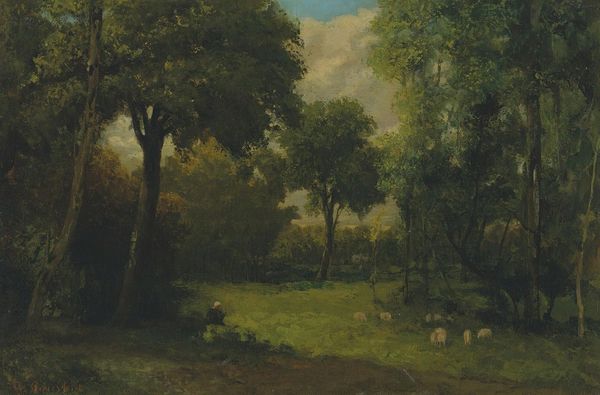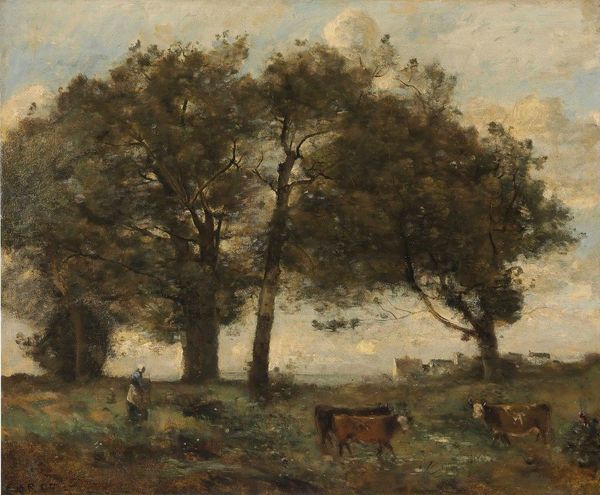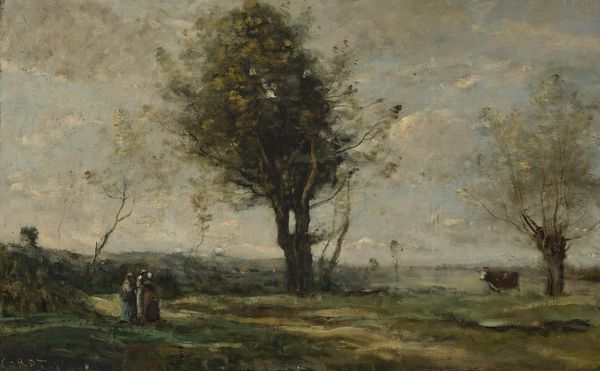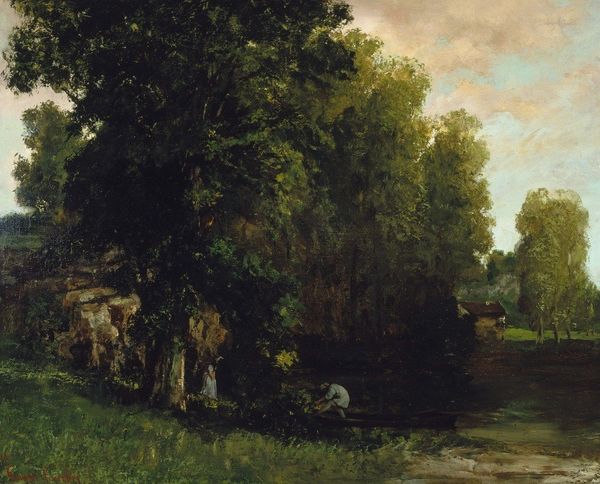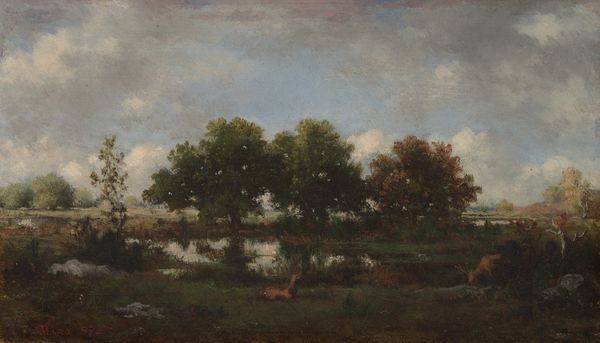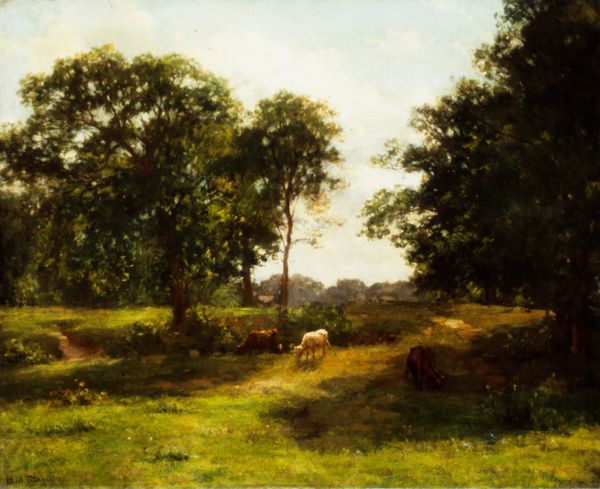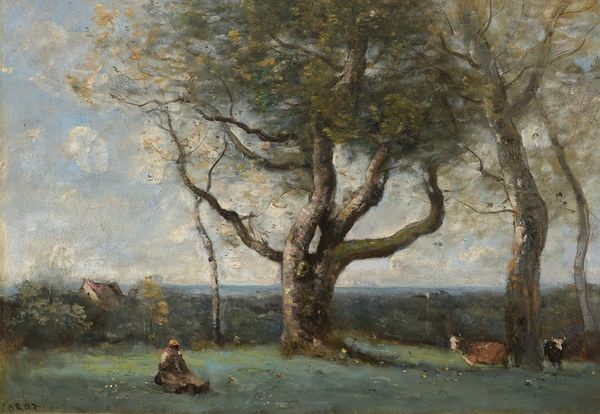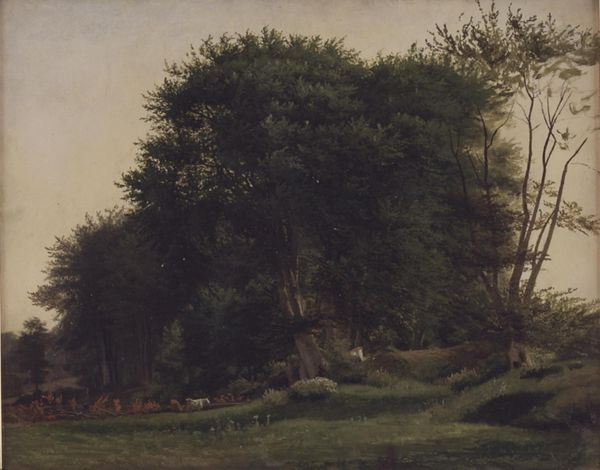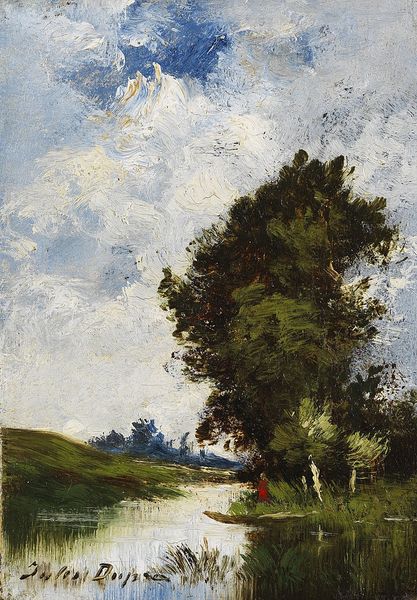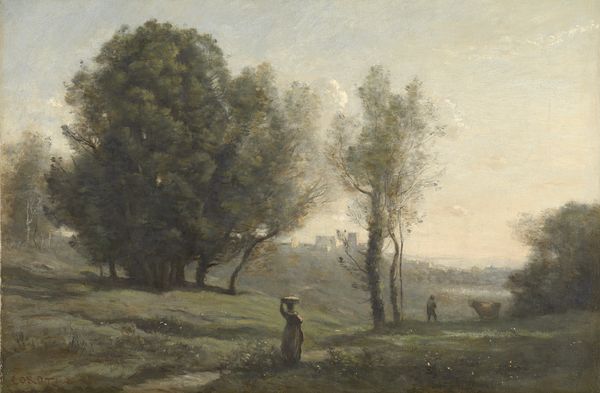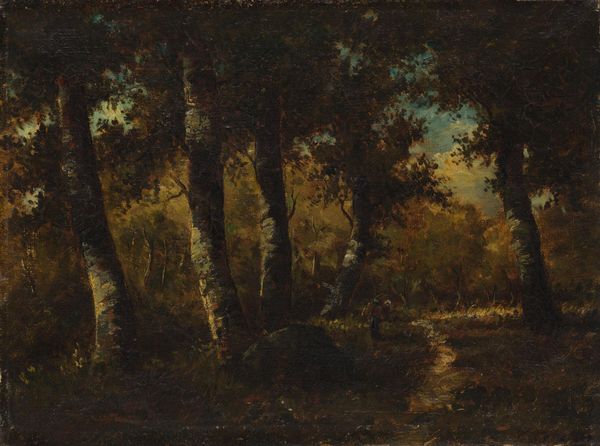
Copyright: Public domain
Winslow Homer created "Twilight at Leeds, New York," depicting a rural landscape. The composition is structured around a sharply angled field sloping downward from left to right. We see the trees silhouetted against a bright sky. Homer's choice of muted tones—the greens and browns of the landscape, the overcast sky—evokes a sense of quietude. Notice how he juxtaposes the horizontal lines of the distant fence with the diagonal slope of the field. This creates a dynamic tension, destabilizing any sense of static calm. The placement of the cows scattered across the field provides a sense of depth. Consider how Homer, through his formal choices, uses the interplay of light and shadow, line and form, to invite us to reflect on our relationship with the natural world, capturing a moment of stillness that is both peaceful and subtly unsettling. The composition's structure reflects a broader contemplation on the interplay between the known and the unknown, the visible and the obscured.
Comments
No comments
Be the first to comment and join the conversation on the ultimate creative platform.
